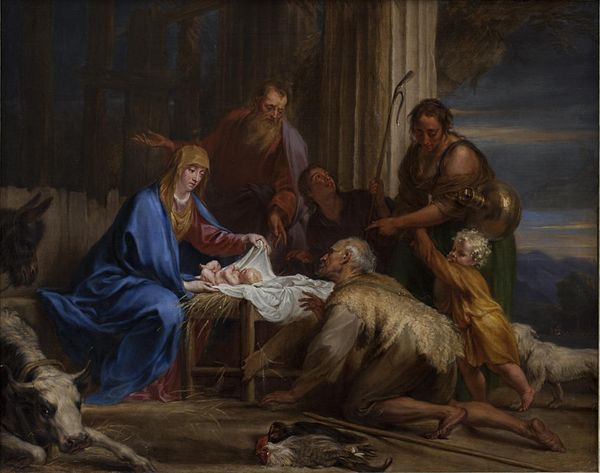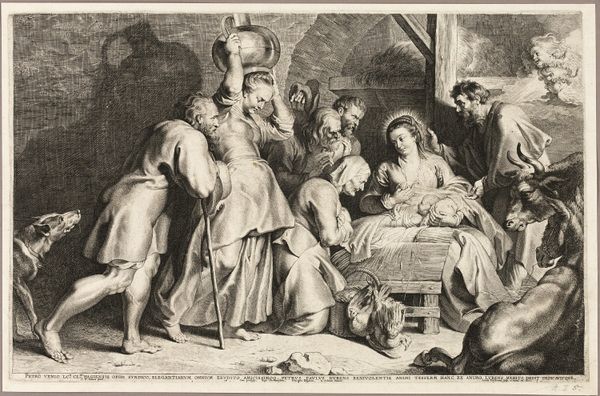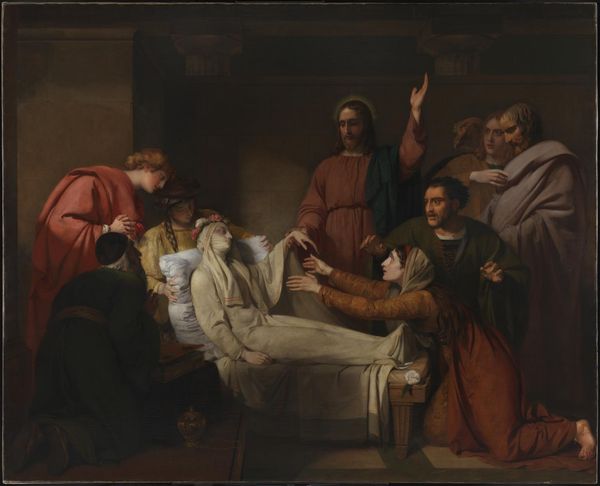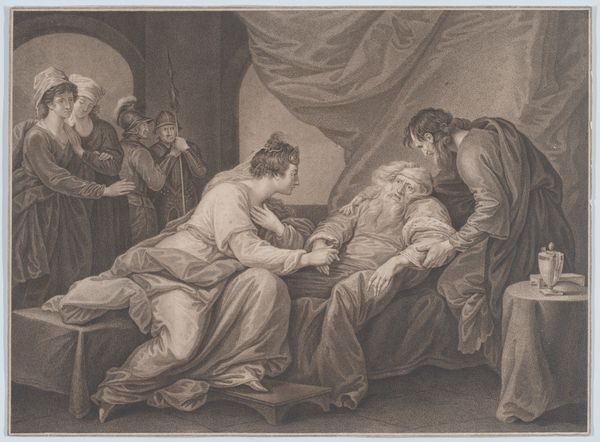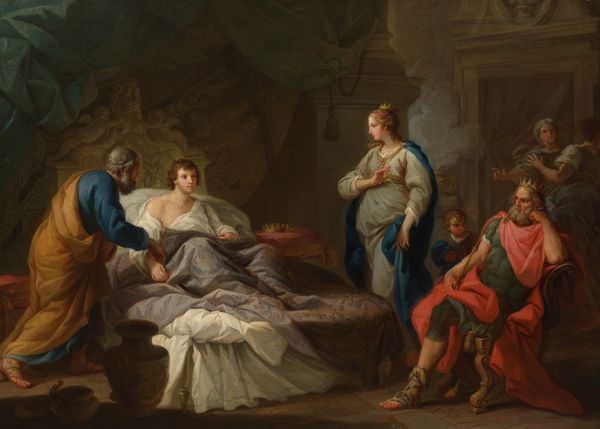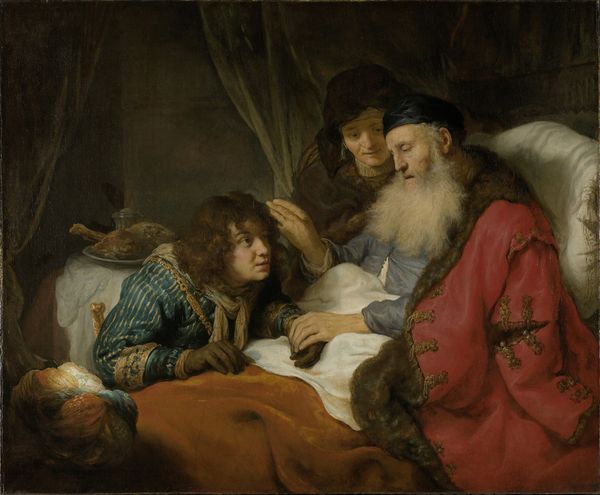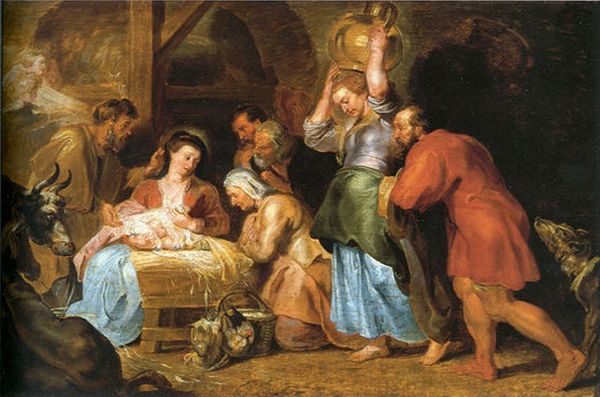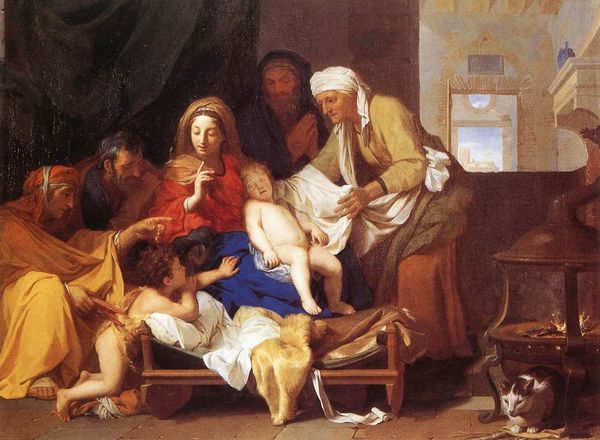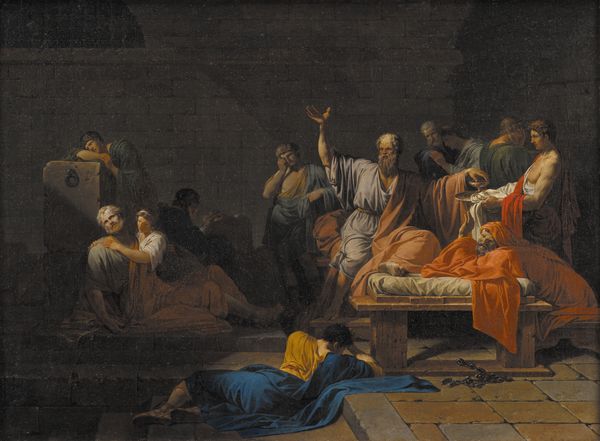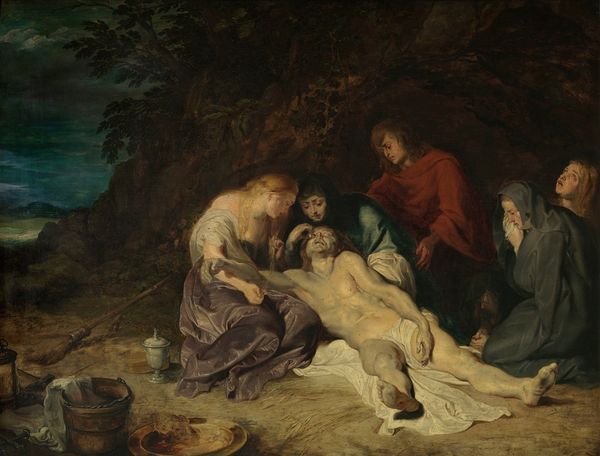
Copyright: Public domain
Jean-Baptiste Greuze painted this canvas, La Dame de Charité, in France probably around the 1760s. The image shows a well-to-do woman presenting a young girl to a dying man; he is surrounded by concerned onlookers. Greuze has created a scene that seems natural and spontaneous, yet it is also carefully arranged to convey a moral message. It offers us a glimpse into the social values of 18th-century France. Charity was seen as a virtue and as a social obligation, particularly for the wealthy. This idea was encouraged by the Catholic church and the monarchy as a means of maintaining social order, and the painting perhaps reflects the way institutional religion supported class structures. Historical sources, such as period pamphlets, sermons, and charitable records, can deepen our understanding of the social functions of art. By looking at visual culture in its historical context, we come to understand how art shapes and is shaped by the societies in which it is produced.
Comments
No comments
Be the first to comment and join the conversation on the ultimate creative platform.
